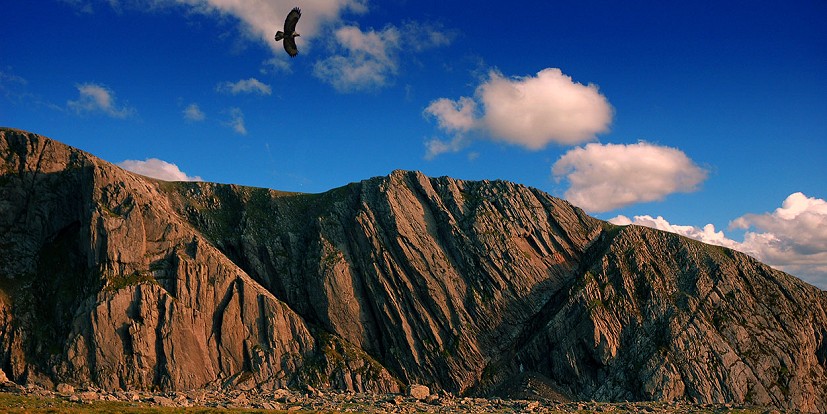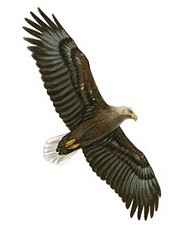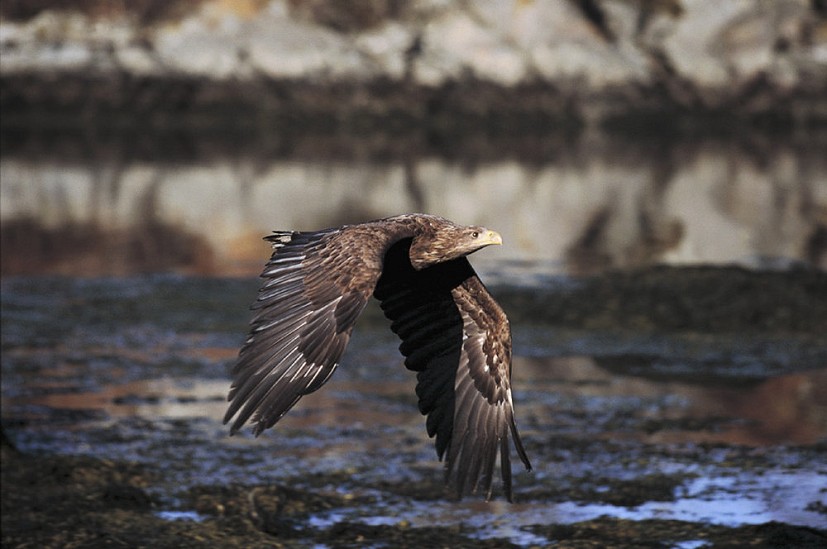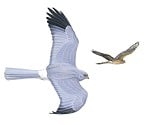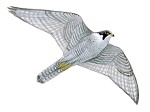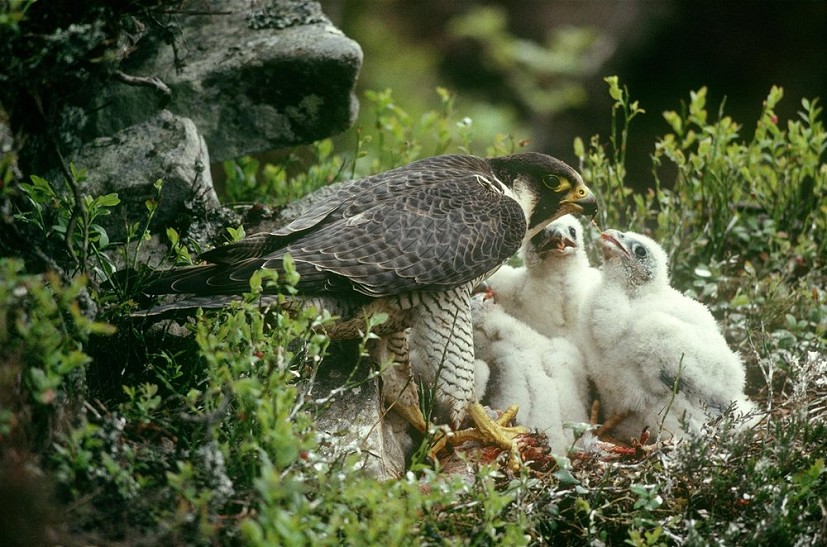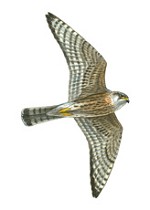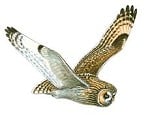Learn to Identify Upland Birds of Prey
Watch the skies when you're out hillwalking and you may be lucky enough to spot a raptor or two. But they'll often be soaring far overhead, a mere dot in the resulting photos, and unless you're an enthusiast it can be hard to say exactly what breed of bird you're looking at. Is it a genuine eagle sighting, or 'just' a buzzard? White-tailed or golden? Merlin or peregrine? If, like us, you struggle with such questions then this basic field guide from the RSPB should come in handy.
Golden eagle
As the second largest bird of prey in the UK, the golden eagle has a different outline to the smaller buzzard. It has long broad wings, a longish tail, and likes to soar and glide on air currents, holding its wings in a shallow 'V'. There are 440 breeding pairs of Golden Eagle in the UK and they have traditional territories and nesting places which may be used by generations. They are mostly found living in the wild, open moorlands and mountains of Scotland, favouring islands and remote glens, so it pays to look out for them soaring high over hillsides in the Highlands and islands. The few English eagles might be spotted at the RSPB's Haweswater reserve and watchpoint in Cumbria. On fine days in winter and early spring look for displaying birds, with their looping and plunging flights.
White-tailed eagle
Not to be confused with its smaller relative, the white-tailed eagle is the UK's largest bird of prey. This 'flying barn door' is very rare, with only 37-44 pairs breeding annually. It has brown body plumage with a conspicuously pale head and neck which can be almost white in older birds. The eagle has very long, broad wings with 'fingered' ends and a wedge-shaped tail which, in adults, is white in colour. During the early 20th century the white-tailed eagle was driven to extinction in the UK due to persecution. The present population has been reintroduced. This rare breeding bird was previously confined to the highlands and islands of the west coast of Scotland, however a reintroduction programme is now taking place in eastern Scotland too.
Buzzard
Now the commonest and most widespread UK bird of prey, the buzzard is quite large with broad, rounded wings, and a short neck and tail. When gliding and soaring it will often hold its wings in a shallow 'V' with the tail fanned. The birds vary in colour from dark brown to much lighter brown, but all have dark wingtips and a finely barred tail. The greatest numbers of buzzards are in Scotalnd, Wales, the Lake District and SW England, but they're now breeding in every county of the UK. They can be found in most habitats particularly woodland, moorland, scrub, pasture, arable, marsh bog and villages. Look for birds soaring over wooded hillsides in fine weather, or perched on fence posts and pylons, and listen out for their plaintive mewing call which could be mistaken for a cat.
Hen harrier
The hen harrier is one of UK's most beautiful and threatened birds of prey. It lives in open areas with low vegetation and in the breeding season UK birds are to be found on the upland heather moorlands of Wales, Northern England, Northern Ireland and Scotland (as well as the Isle of Man). There are 617 breeding pairs (and 29 on the Isle of Man) in the UK. In winter they can be found on lowland farmland, heathland, coastal marshes, fenland and river valleys.
Peregrine
The peregrine is a large and powerful falcon with long, broad, pointed wings and a relatively short tail. It is blue-grey above, with a finely spotted breast, a blackish top of the head and an obvious black 'moustache' that contrasts with its white face. They can often be found above rocky sea cliffs and upland areas throughout the UK in the breeding season. They are swift and agile chasing prey in flight and in winter, they are often seen hunting above East Coast marshland. The RSPB hosts a series of Date with Nature events across the UK during the breeding season to help nature lovers spot these stunning birds.
Merlin
The UK's smallest bird of prey, the merlin, is a compact, dashing falcon which has a relatively long, square-cut tail and rather broad-based pointed wings - shorter than those of other falcons. Its small size enables it to hover and hang in the breeze as it pursues its prey. The UK breeding population is at the south-west extremity of the merlin's European range, and is thinly scattered across upland moorland from south-west England north to Shetland. In winter, birds leave upland areas and come down to inland lowland and coastal areas; the UK merlin population increases at this time as most of the Icelandic breeding birds migrate to our warmer climate. They can be seen in almost any open country but are often found near coasts and at roosts in reedbeds, bogs and on heaths, often with hen harriers.
Short-eared owl
The short-eared owl is not technically a bird of prey, although it is often confused with one. Short-eared owls are medium sized owls with mottled brown bodies, pale under-wings and yellow eyes. There are 620-2,180 breeding pairs in the UK and they primarily breed in Northern England and Scotland, but are seen more widely in winter when there is an influx of continental birds (from Scandinavia, Russia, Iceland) to northern, eastern, and parts of central southern England, especially around the coast. They are commonly seen hunting during the day and it is best to look out for them in winter on coastal marshes and wetlands.
Bird images copyright Mike Langman (rspb-images.com)
Illegal persecution - a major threat to Britain's birds of prey
Raptors are often illegally killed in upland and moorland areas where land is managed primarily for grouse shooting. Here's what the RSPB has to say on this:
Illegal persecution of birds of prey, also known as raptors, has been in the spotlight in recent years. The recoveries of some raptor populations in the UK have been particularly slow, and in some cases non-existent, with evidence suggesting that illegal killing is responsible. Through our work with the Police and the National Wildlife Crime Unit, for whom raptor persecution is a national priority, we know which areas present the most serious challenges. In lowland Britain birds of prey are doing better: the return of the red kite to the Chilterns, for example, is an amazing conservation success story.
There are problems, however, in Britain's uplands, where a number of scientific studies evidence the link between illegal persecution and grouse moor management, where vast tracts of land are managed for grouse shooting and where raptors have traditionally been seen as a threat to grouse.
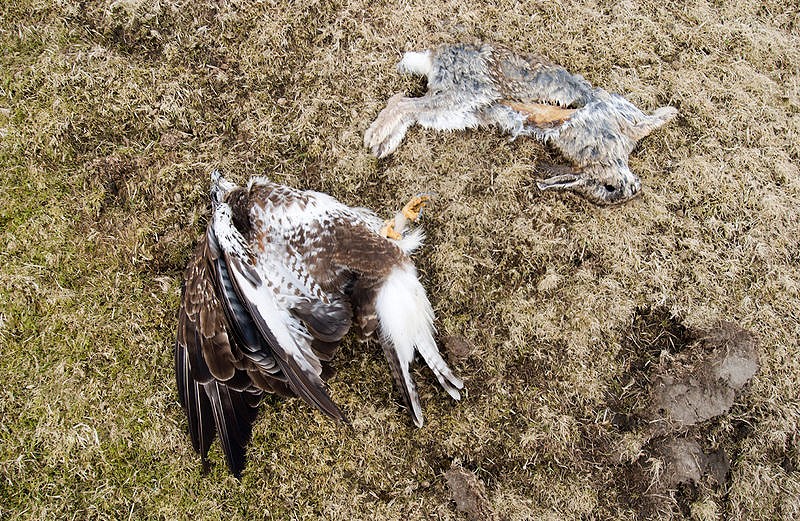
Iconic birds such as the hen harrier, golden eagle, peregrine, goshawk and white-tailed eagle all face poisoning, shooting, trapping and the destruction of their nests. There is increasing public concern over the loss of these majestic birds, reflected in grass roots initiatives to tackle the problem, including groups forming to oppose wildlife crime and some calling for the banning of driven grouse shooting altogether. Without action from the industry to address its problems, these calls can only grow. There's even a Hen Harrier Day, reflecting the dire situation of a bird which has been described as being on the verge of extinction in England: in 2013 not a single pair of hen harriers bred successfully in a country which could support 300 pairs. In the Peak District, peregrines and goshawks should be thriving: but these populations have also tumbled.
Similarly, in upland areas of Eastern & Southern Scotland, where intensive driven grouse moor management dominates the landscape, hen harriers and peregrines consistently fail to breed successfully, many golden eagle territories remain vacant, and we continue to see regular persecution incidents targeting goshawks, red kites and buzzards.
The dedicated RSPB investigations team works closely with law enforcement agencies to investigate crimes against wild birds and ensure those behind illegal killing are brought to justice. They provide advice, expert witness and investigative help to Wildlife Crime Officers (WCOs), the Crown Prosecution Service (CPS), Procurators Fiscal and HM Revenue and Customs. Their work often involves the monitoring of the nests of threatened birds such as hen harriers, to ensure that no harm comes to the birds, their eggs and chicks. However when birds leave the nest it becomes harder to keep an eye on them, and young raptors seeking territories face new dangers as they move through land where they may not be welcome.
Dedicated initiatives such as the RSPB's Hen Harrier Life Project are also helping to improve the situation for this species, through satellite tagging and increased monitoring, whilst working with volunteer raptor field workers, landowners and local communities to protect hen harriers across northern England and southern and eastern Scotland.
Intensively managed grouse moors affect more than just birds of prey. Another key issue is the annual burning of heather on the deep peat which blankets many of these sites to create habitat for red grouse. This damages peat forming vegetation such as sphagnum mosses which are needed to form peat and therefore store carbon. In fact 27% of the UK's blanket bog (that's 76,000 hectares) has already lost peat-forming vegetation. This has dire consequences for the environment in terms of water quality (peat bogs help filter our water), climate change (through the release of carbon into the atmosphere) and habitat loss for other wildlife.
The RSPB believes that licensing driven grouse shooting would send out a strong signal that the illegal killing of raptors will no longer be tolerated, and steer the industry towards a more sustainable future.
The wildlife charity has also called for more effective penalties for wildlife crime, including tougher sentencing, and a provision of vicarious liability throughout the UK (already in place in Scotland), where employers would be legally responsible for the wildlife crimes committed by their employees. This would help ensure that no one can profit from these crimes.
